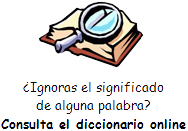Improve Your English by Looking
for Patterns
Eli Hinkel, a professor at Seattle Pacific University, says that English
learners need to learn to recognize patterns in the English language.
These patterns, she says, are actually phrases – terms or expressions
that relate to speaking and writing.
Examples of patterns
So, what exactly are these phrases?
Here is a real-life example. The author of this story sent an email
requesting a time to speak with Hinkel.
The email was similar to this one:
"Hi, Dr. Hinkel,
"My name is John Russell, and I work for the Learning English Division
of Voice of America … Are you available for an interview sometime in the
next two weeks? We're looking for advice from education experts, and
your input would be greatly appreciated."
Hinkel gave examples of important phrases in the email:
"Hi! My name is something and something. I work for VOA. Are you
available …? We're looking for ….
"You did not come and say 'Hey! I saw you speak ... Give me an
interview."
The important pattern-like phrases that she
spoke about are the phrases "Hi! My name is…," "I work for…," "Are you
available …?" and "We're looking for …"
These expressions are considered polite ways, in American English, to
introduce yourself or to ask another person for something.
These phrases are socially acceptable and grammatically correct.
Building a large set of socially acceptable and grammatically correct
phrases can make the language learning process easier, says Hinkel.
Anna Uhl Chamot also has studied learning strategies. She advises
learners to look for patterns as they learn a language. Chamot calls
this strategy "Finding and Applying Patterns."
Academic articles follow patterns
Eli Hinkel says English academic writing, in particular, uses patterns
more often than writing in other European languages.
"So, French article writing is not formulaic, German is not formulaic,
in general, Central and Eastern Europeans don't do formulae. So, it (the
English language) is highly formulaic in practically every way – not
just the structure, but also the mode of expression."
Hinkel adds that English academic articles often begin with a statement
of purpose and then uses common patterns throughout.
She gave an example of common and important phrases for introducing a
topic and giving a summary in academic writing:
"This paper will discuss X, Y, and Z.
"First, it will consider A, B, and C, then it will also take a look at
blah-blah-blah, and in conclusion, the paper will explain B, C and D.
So, in general, these formulae are something that most learners don't
notice."
The important phrases that learners don't often notice include the
following: "First, it will consider …," "then it will take a look at …,"
and "in conclusion, the paper will explain …"
There are many other common phrases in academic writing.
For example, you will often see statements such as "I claim that …,"
which is a common way to make an assertion, or "One suggestion is that
..., " which is a common phrase for making a recommendation.
Future education stories will discuss more common phrases in academic
writing.
Three steps to improving your writing
One common problem for English learners is that they often do their
writing assignments without a clear goal in mind.
For example, Hinkel says, when learners write personal narratives they
may choose their subject with little planning.
“So, they (English learners) just simply say 'Alright, I'm going to
write about my memory from childhood. And it was about my greatest
grandfather in the world. And I love him, and he has been long dead.' "
She adds that English learners can improve their writing by planning
what they want to write:
"So, my first and first and first and second and third and fourth tip:
Whatever it is that learners are writing – personal memory, scientific
article, or a write-up of an interview like this one – follow the
pattern…
"So, that requires three things:
"First, identify similar genre.
"Second, analyze the stinking thing to death, until you can identify
this pattern. And then follow the yellow brick road."
In other words, learners should choose stories, identify patterns in the
stories, and then use the patterns that they find in their own writing.
Try looking for patterns
So, try to find patterns the next time you read a story on our website,
learningenglish.voanews.com. Then try to use the patterns that you find.
Remember, you should not copy a paper line by line. Copying a paper is
considered plagiarism, and plagiarism is unacceptable in
English-speaking academic work!
However, you should look for examples of pattern-like phrases in the
stories. Then, try to include the phrases in your writing or speaking. |
![]() ).
Utiliza el botón derecho del ratón y "guardar enlace" para descargar el
fichero a tu PC, tablet, Smartphone, etc.
).
Utiliza el botón derecho del ratón y "guardar enlace" para descargar el
fichero a tu PC, tablet, Smartphone, etc.![]() Escucha el audio
Escucha el audio



